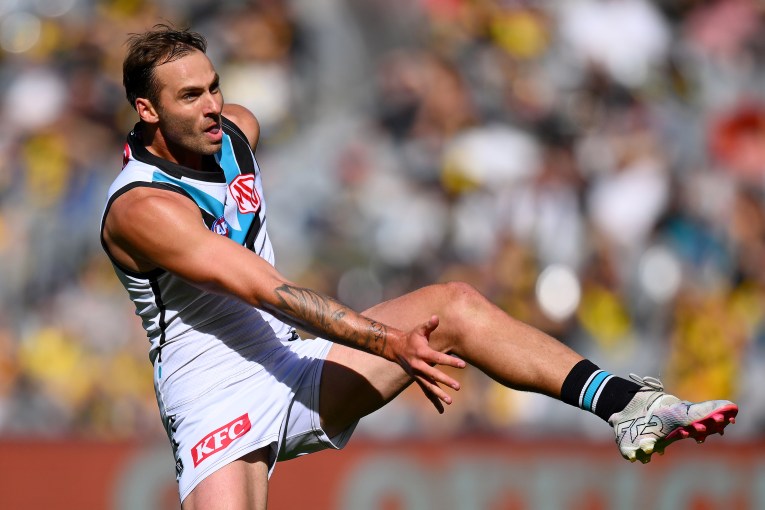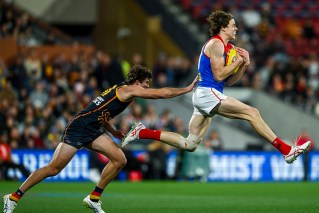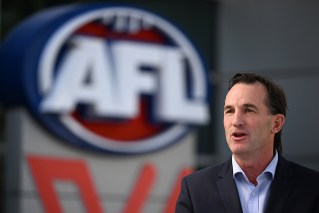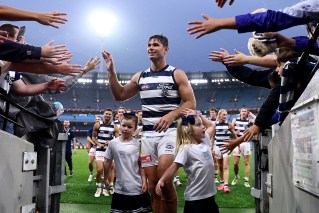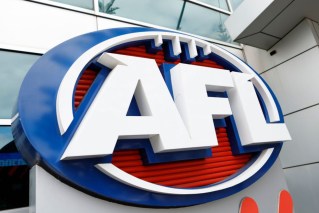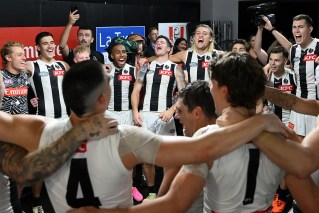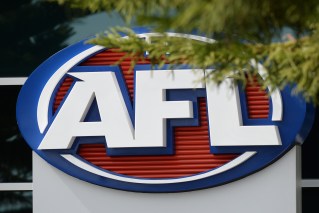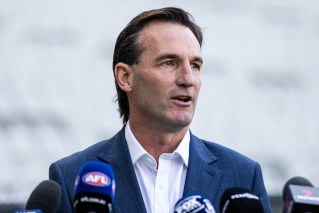Why we were so wrong: Swans not even second best
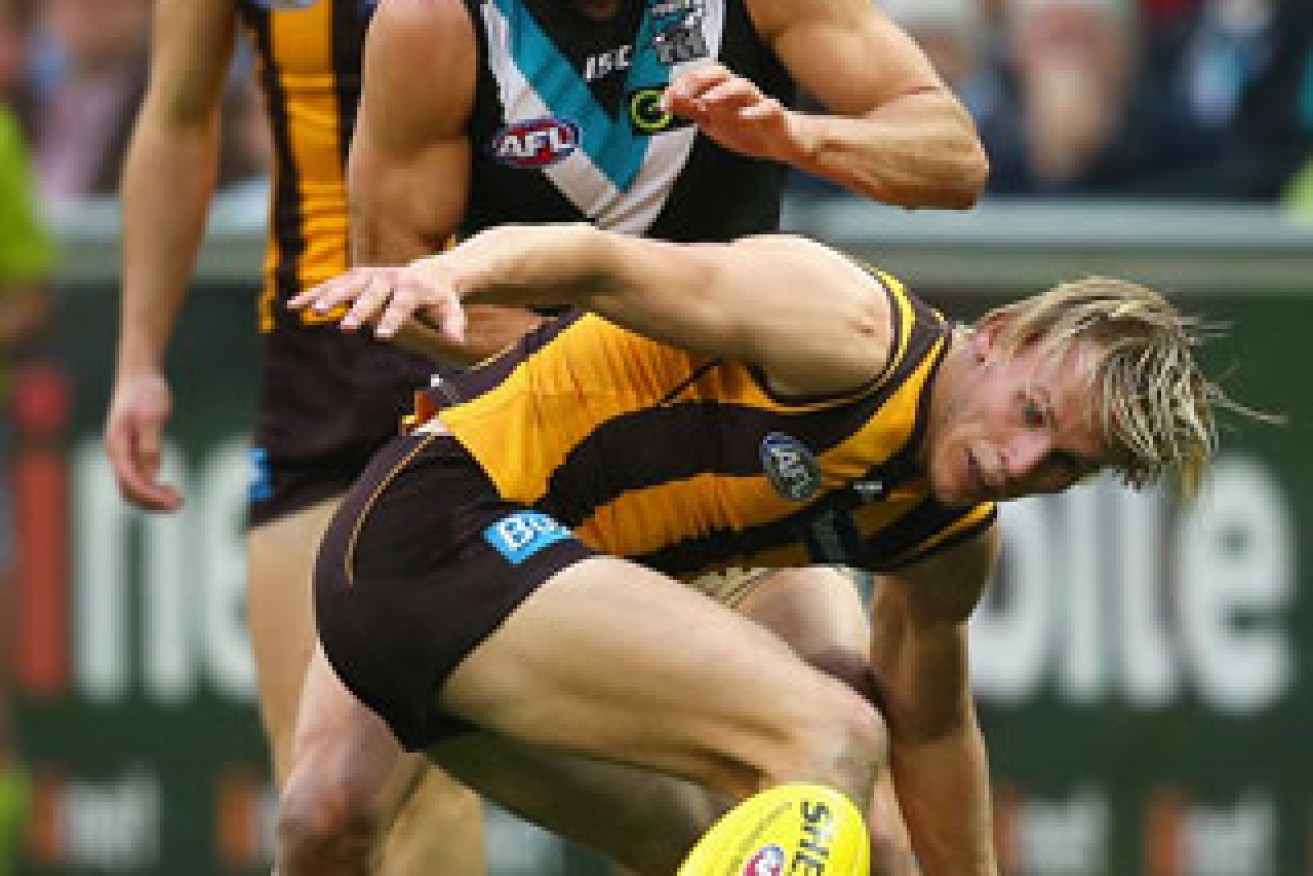
Clarkson switched Will Langford on to Travis Boak in the preliminary final to great effect. Photo: Getty
There would be few spectators at the MCG on Saturday who were not watching in disbelief as Hawthorn dominated the game, quarter by quarter, to run out victors by 63 points. How could such a result transpire against the Sydney Swans – minor premiers and short-priced favourites, sitting at around $1.60 in pre-game betting rings?
People knew, prior to the game, that Hawthorn was a superbly drilled side, able to go toe-to-toe with the best of them. However, it seems that in the final synopsis, the profile of Sydney’s playing personnel convinced the punditry that a win to Sydney was by far and away the most likely outcome.

What a difference two years makes. The Hawks went into 2012 as short-priced favourite. Photo: Getty
So how do we explain this upset? What were the triggers that led the Hawks to fight against the odds and take the 2014 premiership cup?
Upon one analysis, it is fair to say that the build-up to the game mirrored the lead-up to the 2012 grand final.
In that year it was Hawthorn, the minor premiers, which had built up a reputation as the team to beat. Few, if any, gave Sydney a chance to overcome the Hawks, who sat at $1.55 in the grand final betting market.
• Making sense of the grand final madness
• This could be Hawks’ greatest triumph
However, the Hawks were not so convincing as the commentary suggested. Their wins in the final weeks of the year had been hard-fought affairs against Sydney and West Coast, followed by Collingwood and Adelaide in the finals. Sydney had pulled off impressive wins against Adelaide in the qualifying final and an albeit tired-looking Collingwood in the preliminary final. (The nature of these games leading into Sydney’s 2012 premiership victory would lead Ross Lyon, 12 months later, to declare that it was the form finals side, rather than the minor premiers, who should be regarded as the team to beat in the grand final, thus suggesting Fremantle would overcome Hawthorn.)
The concern for Hawks fans in 2012 was that the Hawthorn team might give credence to the press coverage that suggested fate had already bestowed the premiership cup to Glenferrie. This fan at least believes that the psychology of being the favourite worked against Hawthorn on that day.
Could the same be said of Sydney in 2014?
What was going through the minds of the likes of Luke Parker, Kieren Jack and Jarrad McVeigh on Saturday? Did they think it was going to be easy? Assuming football is a game played as much above the shoulders as below them, the tag of favourites may have been a contributing factor to the Swans’ performance on Saturday.
However, this still fails to explain the emphatic nature of the defeat. The mirror to 2012 is shattered by the comprehensive nature in which Sydney was outplayed. The burden of favouritism may be the difference between winning and losing, but not victory and annihilation.

Sydney’s preliminary final opponent was the sixth best team in the competition. Photo: Getty
At risk of being the smug Hawthorn supporter who has engendered loathing over the years, I offer this explanation: Sydney was emphatically beaten not because they weren’t as driven as they should have been, not even because they weren’t the best team of 2014. The Sydney Swans were thoroughly subdued during the course of the game because they were not even the second-best team of the AFL.
Instead of reading the preliminary finals as Sydney stamping their authority on the competition, and Hawthorn struggling to retain the privilege to be grand finalists, it should be acknowledged that Sydney beat a team most definitely ranked sixth for the season in North Melbourne.
The top five clubs stood apart this year, all of which could lay claim to being contenders for the flag.
After being close to flag favourites earlier in the year, Port Adelaide worked their way through a mid-year slump, brought about through injuries to key players such as Angus Monfries and Jackson Trengove, to deliver stirling performances in the finals. In the qualifying final, they crushed Richmond, who had won their past nine games. Then in the second semi-final, they came from behind to defeat Fremantle in Perth.
Hawthorn’s ability to withstand the irrepressible Port Power on preliminary final day drew heavily on their ability to mix things up to keep the opposition unsettled and, more importantly, to steady against opposition run-ons. Having the likes of Luke Breust rotating through the middle, and switching Will Langford on to Travis Boak, helped turn the tide in the second quarter.
Perhaps Alastair Clarkson’s AFL legacy for 2014 is the introduction of continuously changing team set-ups that make it nigh impossible for opposition clubs to establish rhythm.
With constantly evolving positional structures, teams can kick only one or two goals against Hawthorn before they find themselves matching up to a completely new outfit. Rarely during the season did Hawthorn suffer run-ons of four or five goals against them. The swirling tempo of their game plan continually stifles any momentum that their opponents hope to secure.

Clarkson switched Will Langford on to Travis Boak in the preliminary final to great effect. Photo: Getty
Against Port Adelaide, the Hawks’ changing game plan over-corrected in the final minutes, pushing into a defensive mode that almost cost them the game. Defensive kicks by Hawthorn from half-back to half-forward were continuously rebounded leading to conversions from Monfries, Chad Wingard and Jared Polec.
Port Adelaide have many avenues to goal, and look to send the ball quickly into their swarm of potent small forwards. A similar spread of effective forwards is crucial to Clarkson’s dynamic game plan. To this end, in 2013, Clarkson relegated Lance Franklin to a point person within one of a number of lines towards goal.
The Swans, on the other hand, through the recruitment of giant spearhead Kurt Tippett in 2013, and Franklin the following year, are locking in their set plays, thus becoming exposed to the very same vulnerabilities that troubled Hawthorn in 2012.
That leaves Port Adelaide in the running as the team most capable of catching Hawthorn.
And on September 21, in the preliminary final, they almost did.
Whilst the punditry saw this as a clawing back of Hawthorn’s abilities, perhaps we should best read the Port Adelaide-Hawthorn game as two teams displaying a brand of football that is superior to the rest of the competition. Perhaps only then can we explain the carnage that was witnessed last Saturday.
Peter Hallowes is a football analyst and Hawthorn supporter. He is trying hard not to be too smug.
